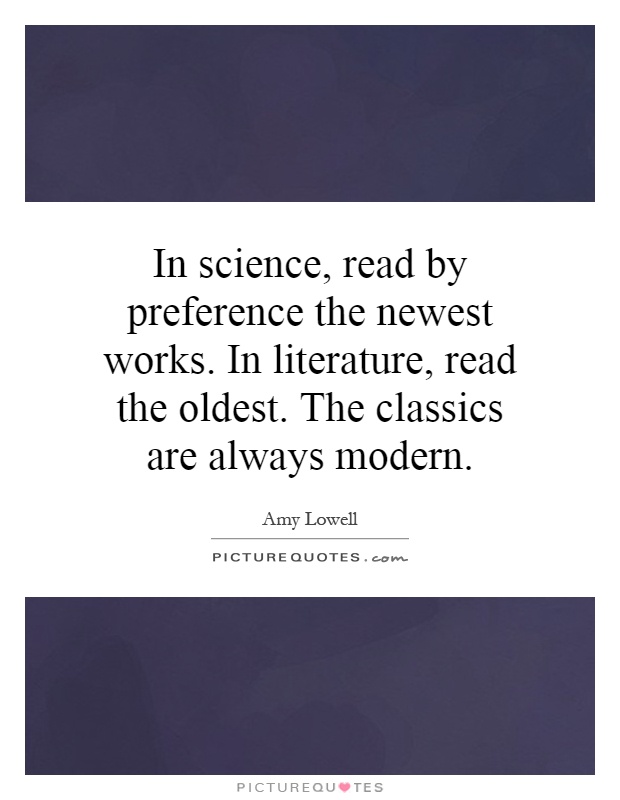In science, read by preference the newest works. In literature, read the oldest. The classics are always modern

In science, read by preference the newest works. In literature, read the oldest. The classics are always modern
Amy Lowell was an American poet who lived from 1874 to 1925. She was known for her modernist poetry that often explored themes of love, desire, and the natural world. Lowell was a prominent figure in the literary world during her time, and her work continues to be studied and appreciated today.When considering the quote “In science, read by preference the newest works. In literature, read the oldest. The classics are always modern” in the context of Amy Lowell, it is important to understand the significance of both new and old works in the literary world. Lowell herself was a poet who drew inspiration from both contemporary and classical sources, blending traditional forms with innovative techniques to create her own unique style.
In terms of science, it is often necessary to stay up-to-date with the latest research and discoveries in order to remain informed and relevant in the field. This is because science is constantly evolving, with new technologies and methodologies leading to new insights and understandings. In this sense, reading the newest works in science is essential for staying current and informed.
On the other hand, literature has a timeless quality that allows it to transcend time and remain relevant across generations. The classics, in particular, have endured the test of time because they speak to universal themes and emotions that are still relevant today. By reading the oldest works in literature, one can gain a deeper understanding of the human experience and appreciate the enduring power of great storytelling.
For Amy Lowell, the classics were a source of inspiration and influence in her own work. She drew on the works of poets such as Emily Dickinson and Walt Whitman, as well as ancient Chinese and Japanese poetry, to inform her own poetic style. By studying the classics, Lowell was able to learn from the masters and incorporate their techniques into her own writing, creating a body of work that was both innovative and timeless.












 Friendship Quotes
Friendship Quotes Love Quotes
Love Quotes Life Quotes
Life Quotes Funny Quotes
Funny Quotes Motivational Quotes
Motivational Quotes Inspirational Quotes
Inspirational Quotes